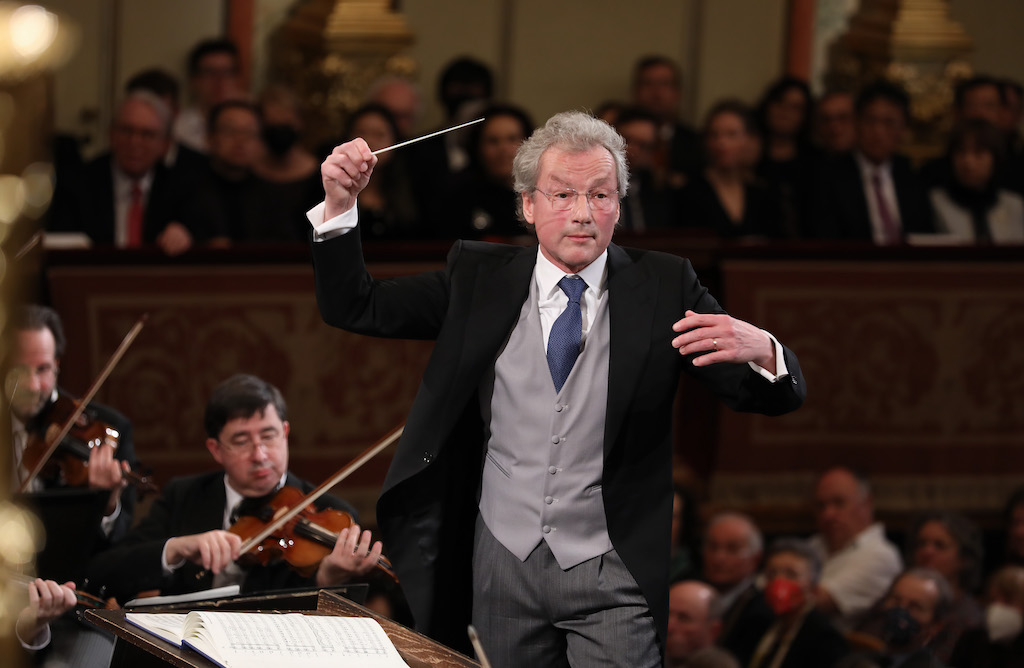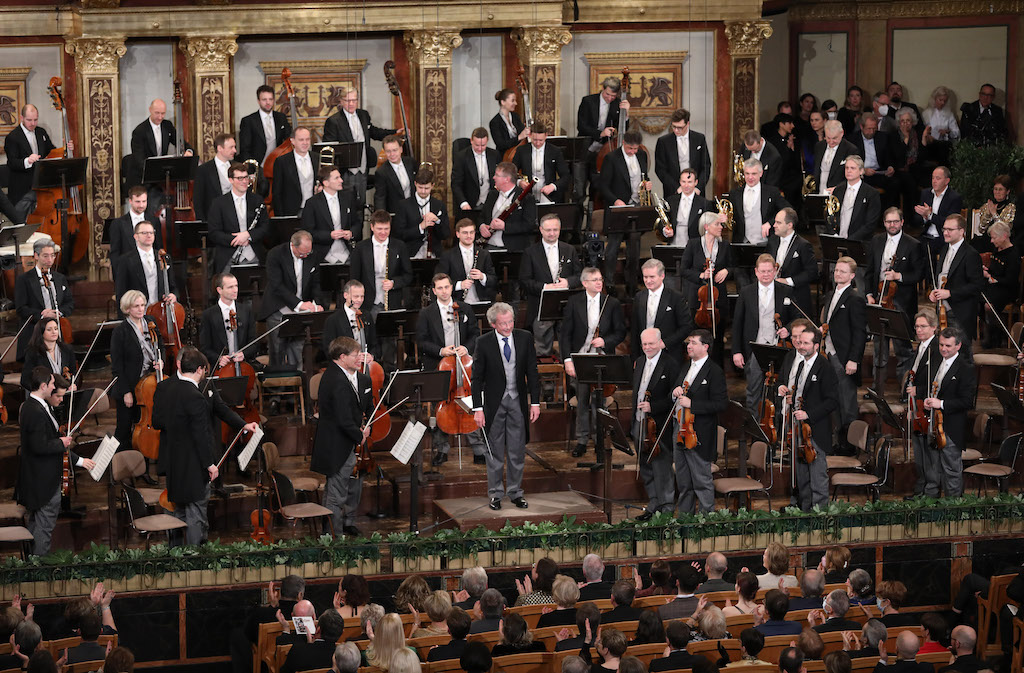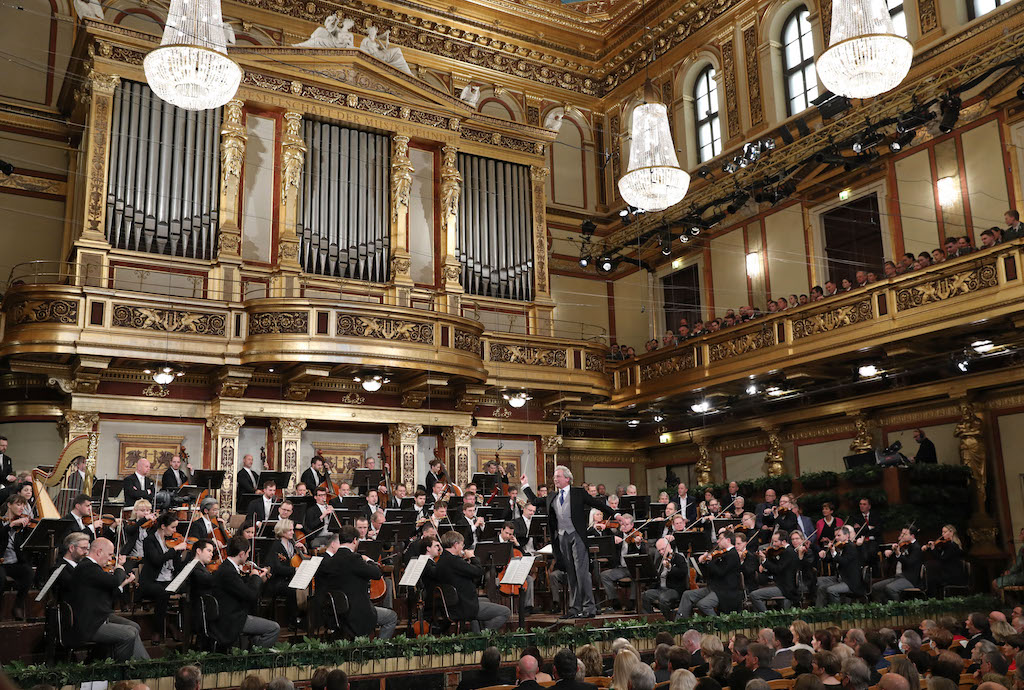What better way to introduce 2023 than the symphonic sound of one of the world’s greatest orchestras? For over seventy years the Vienna Philharmonic, founded in 1842, have been sounding in the New Year in glorious celebration.
The Vienna Philharmonic’s New Year’s concerts (Neujahrskonzert der Wiener Philharmoniker) are an annual tradition that have been held every year since 1939, delighting packed audiences with wondrous music to signal in the next year.
The 2022-2023 concert programme features Viennese waltzes, polkas, and other works by Austrian composers, including the infectious dance music of Johann Strauss II (composer of many toe-tapping waltzes, polkas, and quadrilles including the Blue Danube), the master of the operetta Franz Lehár (Die lustige Witwe), and the merriment of Josef Strauss’ polka-mazurka music. As well as demonstrating the perfect balance of the orchestra, the concert presented an opportunity to showcase these fine Austria-Hungarian composers.
Leading the eighty strong orchestra is internationally renowned conductor Franz Welser-Möst (currently music director of the Cleveland Orchestra), having most recently played with the Vienna Philharmonic in the summer of 2022 at the Salzburg Festival, conducting the orchestra in performing Richard Strauss‘ Rosenkavalier-Suite and Alpine Symphony.

For the concerts, orchestra perform in the grand Wiener Musikverein concert hall in Vienna, Austria. More important than the grandeur are the fine architectural acoustics. The concert venue superbly captures the supporting voices of the Vienna Boys and Girls Choirs (who performed Heiterer Muth by Josef Strauss).
Other renowned Austria composers also feature in the concert, including Joseph Hellmesberger Jr., Joseph Lanner, and Wolfgang Amadeus Mozart. The first part of the concert veers more towards the introspective, with dramatic pieces touching on a range of emotions, a way of saying goodbye to 2022. The second part is more upbeat, the selection of the twenty-or-so compositions is joyous, including a set of exhilarating mazurkas and marches to lift the audience into 2023.

It is true there is something anachronistic about the concert, but this is no bad thing, and the overall experience is uplifting. The music is thrilling and there is a collective sense of celebration and hope for the coming year.
As is tradition, the orchestra performed the New year concert on December 30 and 31. While the New Year’s Eve concert is perhaps the most anticipated, a final performance in the ‘Golden Hall’ (Goldener Saal) occurs on January 1st. As with previous years, the last concert is televised and streamed, broadcast around the world on New Year’s Day.
As well as conventional broadcasters, the concert is streamed via MEDICI:TV, enabling hundreds of thousands of people to enjoy the spectacle from anywhere in the world and to truly celebrate the coming of 2023 in spectacular style.
If you have not seen the concert before, it is a delight. For those watching again, although there are always surprise performances, the final encore remains, as ever, and appropriately, Johann Strauss I’s thumping Radetzky March. This is one of the most familiar, and infectious, marches ever composed (renowned for its rhythmic pattern of three anapaests and one iamb) and there is no better way to gallop (or polka schnell) into the New Year played out by a superb orchestra and the supported by the thunderous clapping of a delighted audience.


